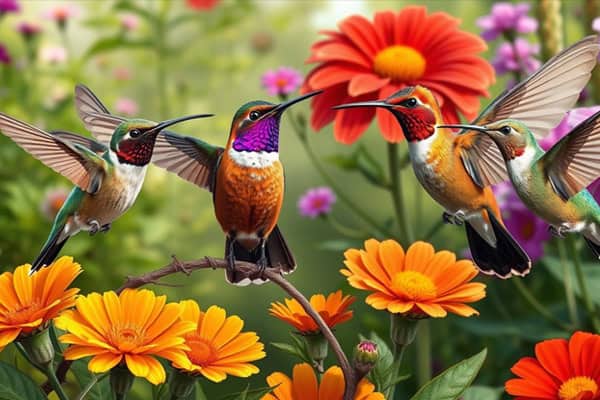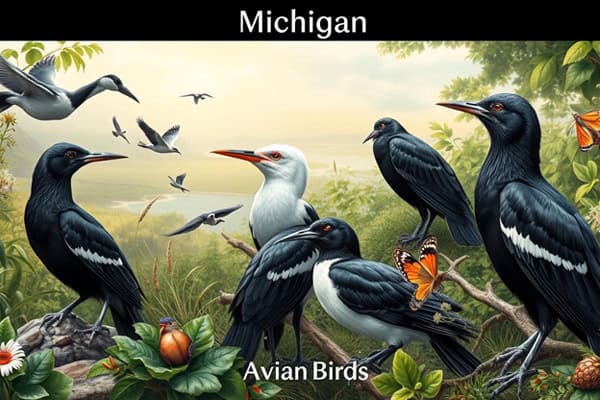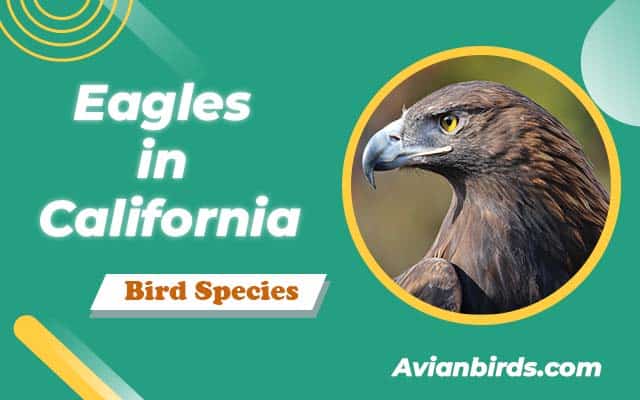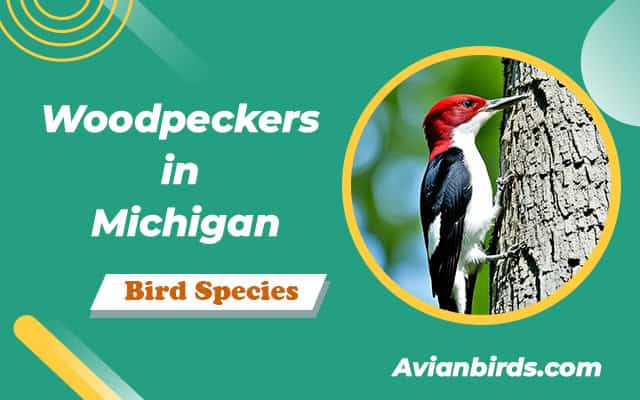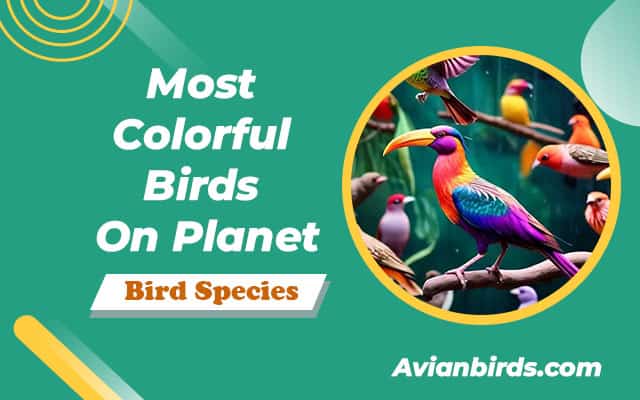4 Types of Hummingbirds in Missouri (With Pictures)
Did you know hummingbirds in Missouri can flap their wings up to 80 times a second? This fact shows how amazing these tiny birds are. In Missouri, we’re lucky to see many hummingbird species. They add color to our gardens and parks.
We’ll explore the Ruby-Throated Hummingbird, Calliope Hummingbird, Rufous Hummingbird, and Anna’s Hummingbird in this article. Each species plays a special role in our ecosystem. By learning about their habits and needs, we can help protect them.
Common Hummingbirds Found in Missouri
- Ruby-throated hummingbird
- Calliope Hummingbird
- Rufous Hummingbird
- Anna’s Hummingbird
1. Ruby-throated hummingbird
- Scientific Name: Archilochus colubris
- Size: 7.5–9 cm (3–3.5 in)
- Weight: 2–4 g (0.07–0.14 oz)
- Lifespan: 3–5 years (up to 9 years in the wild)
- Diet: Nectar from flowers, small insects, and spiders.
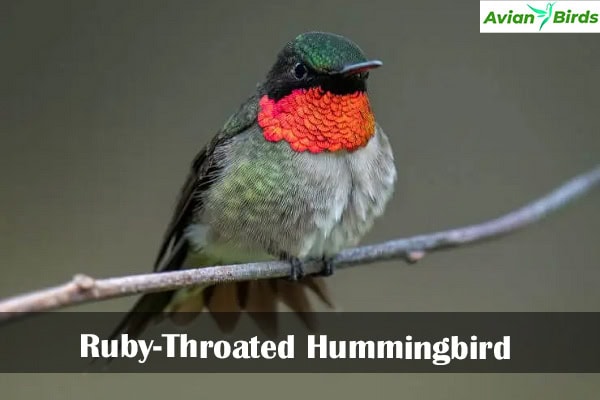
The Ruby-Throated Hummingbird, known as Archilochus colubris, is a common sight in North America. They are small, with lengths between 3 to 3.75 inches and weigh from 2 to 6 grams. Their physical characteristics make them a joy to watch. Males show off a bright ruby-red throat patch and emerald-green feathers. They move with amazing speed, beating their wings up to 80 times a second to hover in place.
Scientific Description and Characteristics
The Ruby-Throated Hummingbird’s bright colors are truly captivating. They have special traits that help them live in different places. Their fast flight and ability to hover are especially impressive. Their long, thin bill lets them reach nectar sources that others can’t.
Nesting Habits and Behavior
The female Ruby-Throated Hummingbird builds the nest alone, using soft plant fibers, spider silk, and dandelion down. She chooses to nest in the inner branches of trees for safety and privacy. The nest holds two small eggs that look like jellybeans. Their nesting shows how resourceful and adaptable they are in the wild.
Diet and Feeding Preferences
The Ruby-Throated diet mainly consists of nectar to keep up their fast metabolism. They also eat protein-rich insects and spiders. These birds visit gardens with native flowers, making them easy to spot. Having a variety of nectar sources in gardens helps these birds and supports the ecosystem.
| Characteristic | Description |
|---|---|
| Scientific Name | Archilochus colubris |
| Length | 3 to 3.75 inches |
| Weight | 2 to 6 grams |
| Coloration | Iridescent ruby-red throat, emerald-green plumage |
| Feeding | Nectar, insects, and spiders |
| Nesting Materials | Soft plant fibers, spider silk, dandelion down |
2. Calliope Hummingbird
- Scientific Name: Stellula calliope
- Size: 7.5–9 cm (3–3.5 in)
- Weight: 2–4 g (0.07–0.14 oz)
- Lifespan: 3–5 years
- Diet: Nectar from flowers, small insects, and spiders.
The Calliope Hummingbird, known as Selasphorus calliope, is one of the smallest hummingbirds. Its bright greens and stunning pinks catch our eye. Males are especially striking with their vibrant magenta throat, making them easy to spot.

Striking Features and Identification
This bird is about 2.75 to 3.25 inches long, adding to its charm. We see them flying around feeders, showing off their bright colors and quick flight. Their size and unique throat feathers help us tell them apart from other hummingbirds.
Reproductive Behavior and Nesting
Female Calliope Hummingbirds take care of the young. They build hidden nests with plant fibers, moss, and spider silk. These nests keep the eggs safe during incubation. The mothers care for their chicks until they’re ready to fly, showing great dedication.
Dietary Habits and Ecological Role
Like other hummingbirds, their diet mainly includes nectar from flowers. They also eat small insects for protein, which is important during breeding. These birds help pollinate plants, playing a big role in our ecosystem.
Hummingbirds in other Regions:
| Hummingbirds in Florida |
| Hummingbirds in Maryland |
| Hummingbirds in Michigan |
| Hummingbirds in New York |
| Hummingbirds In Virginia |
3. Rufous Hummingbird
- Scientific Name: Selasphorus rufus
- Size: 7.5–9 cm (3–3.5 in)
- Weight: 3–4 g (0.11–0.14 oz)
- Lifespan: 5 years or more
- Diet: Nectar from flowers, small insects, and spiders.
The Rufous Hummingbird, known as Selasphorus rufus, is a standout with its bright orange-brown feathers and bold nature. It’s small, measuring 2.75 to 3.75 inches long. This bird is famous for its long migration, traveling from Alaska to Mexico in search of food and a place to nest.
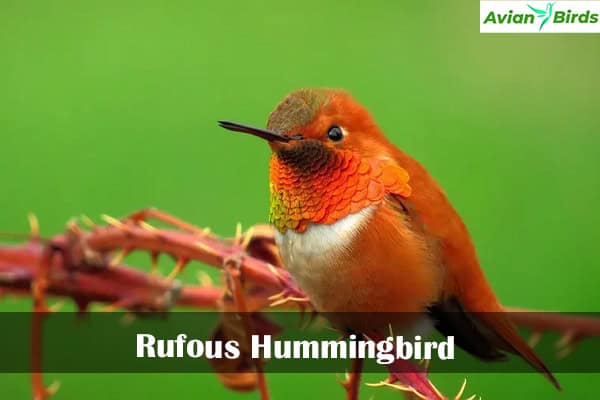
Appearance and Migration Journey
The Rufous Hummingbird’s bright feathers make it easy to spot. Its vibrant colors stand out in its green surroundings. These birds follow a set path during migration, driven by instinct and the need for food and shelter.
Nesting Practices and Maternal Care
The female Rufous Hummingbird is key to nesting. She builds a nest with plant materials and spider silk. Her nest is hidden and camouflaged, often covered in lichen to protect it from predators. She takes great care of her young, keeping them safe and warm.
Diverse Diet and Feeding Techniques
Rufous Hummingbirds of Missouri eat nectar from flowers like penstemons and salvias. These flowers give them the energy they need. They also eat small insects and spiders for protein. Their feeding skills and hovering abilities let them get to their food easily, showing how well they’ve adapted.
| Feature | Details |
|---|---|
| Scientific Name | Selasphorus rufus |
| Length | 2.75 to 3.75 inches |
| Migration Distance | Up to 3,900 miles |
| Nesting Material | Plant materials and spider silk |
| Common Nectar Sources | Penstemons, salvias |
| Diet Supplements | Small insects and spiders |
4. Anna’s Hummingbird
- Scientific Name: Calypte anna
- Size: 7.5–9 cm (3–3.5 in)
- Weight: 3–4 g (0.11–0.14 oz)
- Lifespan: 3–5 years (up to 10 years in the wild)
- Diet: Nectar from flowers, small insects, and spiders
Exploring Anna’s Hummingbirds of Missouri reveals their stunning looks and interesting ways. They catch the eye with their bright green feathers and pink-red crowns. Their size, around 3.9 to 4.3 inches, makes them even more charming. Their unique sounds add to their appeal in the birding world.
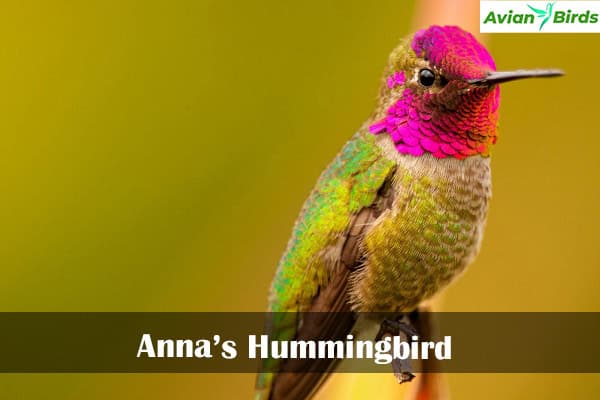
Physical Characteristics and Vocalizations
Anna’s Hummingbirds are easy to spot with their bright colors and unique shape. They are also known for their beautiful songs and chirps. These sounds help them communicate with others and find a mate.
Nesting Sites and Patterns
Anna’s Hummingbirds pick special places to nest. They like shrubs, trees, and even man-made nests like hanging baskets. The female builds a small, camouflaged nest to keep her babies safe from predators.
Male Courtship Displays
Males show off to attract females with their courtship displays. They perform aerial dives and make loud sounds to show off. These displays are key to their success in finding a mate.
Conservation Efforts for Hummingbirds in Missouri
Conservationists in Missouri are working hard to protect hummingbirds. We focus on saving these colorful birds and their homes. This means fixing native plants that give them food and shelter and making safe paths for their migration.
Teaching people is key to protecting Missouri’s wildlife. We want to show how pesticides harm hummingbirds and other animals. By sharing the need for organic gardens and green habits, we hope our community will help protect nature.
We have many programs and partners to save hummingbird habitats. Joining local projects and volunteering helps us make a big difference. Together, we can help these tiny birds thrive.
| Conservation Initiative | Description | Impact on Hummingbirds |
|---|---|---|
| Native Plant Restoration | Replanting native trees, shrubs, and flowers that provide food and nesting sites. | Enhances feeding and breeding success. |
| Wildlife Corridors | Creating safe paths for migration and dispersal among species. | Reduces risks associated with habitat fragmentation. |
| Pesticide Reduction Campaigns | Educating the public about the effects of harmful chemicals on wildlife. | Promotes healthier environments for all species. |
Creating Hummingbird-Friendly Habitats
We can all help our local hummingbirds by creating welcoming habitats. Making spaces that attract these colorful birds is simple. The key is choosing the right plants, focusing on those rich in nectar.
To garden for hummingbirds, planning is key. Here are some tips:
- Choose native plants that bloom at various times throughout the season to provide a continuous food source.
- Avoid using pesticides that can harm hummingbirds and their food sources.
- Install feeders filled with a mixture of sugar water (1 part sugar to 4 parts water) as a reliable supplement to natural nectar.
- Place feeders in shaded areas to prevent the sugar solution from spoiling quickly.
- Keep an eye on cleanliness, regularly changing both water in feeders and nectar at least every few days.
It’s not just about planting flowers and setting up feeders. Adding small water features around our gardens can also attract hummingbirds. These features help with hydration and make the area more inviting.
By following these tips, we help with conservation efforts and enjoy the beauty hummingbirds add to our yards.
| Plant Type | Flower Color | Bloom Season | Nectar Quantity |
|---|---|---|---|
| Bee Balm | Red | Summer | High |
| Cardinal Flower | Red | Summer | High |
| Salvia | Blue, Purple | Summer | Medium |
| Trumpet Vine | Orange | Summer | High |
| Columbine | Red, Yellow | Spring | Medium |
The Significance of Hummingbirds in the Ecosystem
Hummingbirds of Missouri are key players in our ecosystems, acting as important pollinators. They help plants reproduce by feeding on nectar, which is crucial for the growth of many species. This process is vital for the production of fruits and seeds.
Learning about hummingbirds and their role as pollinators shows us how connected our world is. They remind us that every living thing is part of a larger ecosystem. This connection helps us understand the balance needed for nature to thrive.
We must protect the homes of these amazing birds to keep our ecosystems healthy. By making our gardens welcoming for hummingbirds, we help them and our environment. We can do this by using native plants and reducing the use of harmful pesticides.
| Hummingbird Species | Pollination Impact | Associated Flora |
|---|---|---|
| Ruby-Throated Hummingbird | High | Bee Balm, Cardinal Flower |
| Calliope Hummingbird | Moderate | Columbine, Salvia |
| Rufous Hummingbird | High | Hummingbird Sage, Red Hot Poker |
| Anna’s Hummingbird | Moderate | Fuchsia, Snapdragon |
These examples show how hummingbirds and ecological balance are closely linked. By supporting these birds, we help create a better world for all living things.
Read More🐦Related Articles:
| Swan Spiritual Meaning |
| Birds in Spain |
| Small Birds with Long Beaks |
| Birds That Lay Blue Eggs |
| Birds With Red Beaks |
Conclusion
Throughout this guide, we’ve seen how hummingbirds in Missouri are not just pretty birds but crucial for our environment. Each type, like the Ruby-Throated Hummingbird and Anna’s Hummingbird, has a special role. They help keep our region’s biodiversity rich.
Their bright colors make our gardens and nature more beautiful. This shows how important they are for our ecosystem’s balance.

